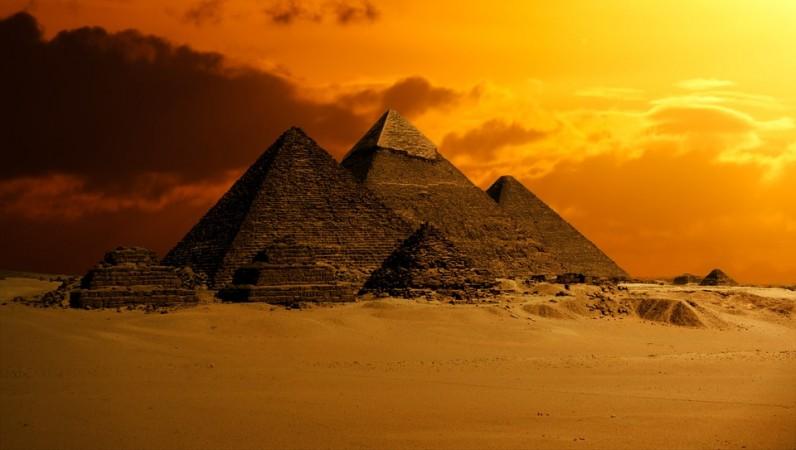
The Great Pyramid of Giza, which was built around 4,500 years back, has a giant void, which was discovered by cosmic rays.
Here are the top things to know about this discovery:
1. A team of physicists discovered an enormous void in the Great Pyramid of Giza, which has been built as a tomb for the Fourth Dynasty Egyptian pharaoh Khufu, which is often Hellenicised as "Cheops".
"Such a big void can't be an accident," says Mehdi Tayoubi, president of the non-profit Heritage Innovation Preservation Institute in Paris, who led the research, as reported by Science Magazine.
ALSO READ: Conspiracy theorist discovers mysterious underwater pyramids near Florida using Google Earth
2. The void is found to be around 30 metres long, 8 metres high, 2 metres wide, similar to a cathedral, but much narrower, which is built 20 metres above the ground in the pyramid's core.
The reason behind the existence of the cavity remains unknown. There are possibilities of the cavity holding something precious but that too would remain unknown as the monument is inaccessible.
ALSO READ: Woman uses own vaginal fluid to attract men, and the creepy trick works!
3. Researchers used cosmic rays of high-energy radiation that mainly originated outside the solar system. The team of physicists found the void within the pyramid using muons. The high-energy by-products of cosmic rays are referred to as muons, which are formed when protons and other atomic nuclei hit the atmosphere.
ALSO READ: Long-term space mission impacts the brains of astronauts severely
4. The muon particles travel in a number of tens of thousands per minute via each square metre of Earth. The particles have the ability to travel through hundreds of metres of stones as these electron-like particles but are around 207 times heavier than them and negatively charged. Electrons, on the other hand, can only travel up to a few centimetres.
ALSO READ: BIZARRE: How a rare condition got a US woman pregnant while she was already pregnant
5. The researchers used the muon particles to examine the Pyramid just like our bones are analysed by doctors using X-rays. These particles can be used to look into volcanoes to failed nuclear power plants.
"To do that, all researchers need to do is to place a muon detector, such as tile-sized special photographic films, underneath, within, or near an object and count the number of muons coming through the thing in different directions," Science Magazine revealed.
ALSO READ: Giant cave discovered on Moon which could aid human colonisation on the lunar surface
6. The archaeologists conducted an experiment in 2016, after which anomalies were unveiled that pointed towards the presence of something behind the walls of the Great Pyramid at Giza. After this, various direction-sensitive muon detectors were placed by the researchers in the queen's chamber and in an adjacent corridor within the pyramid and at its base on the north side, and they analysed the accumulated data in every 2 to 5 months, post which presence of three large cavities was confirmed by them.
ALSO READ: 'Fish-lizard' fossil belonging to Jurassic era discovered in Gujarat's Kutch district
7. The king's and queen's chamber and a long corridor that connects them is known as the grand gallery. The new void region was detected by the archaeologists just above the grand gallery.
"We don't know whether this big void is horizontal or inclined; we don't know if this void is made by one structure or several successive structures," explained Mehdi Tayoubi from the HIP Institute, Paris.
"What we are sure about is that this big void is there; that it is impressive; and that it was not expected as far as I know by any sort of theory," Tayoubi added.
"It could be a kind of space that the builders left to protect the very narrow roof of the grand gallery from the weight of the pyramid," said eminent American archaeologist Mark Lehner sits on a panel reviewing ScanPyramids' work, as quoted by a BBC report.















